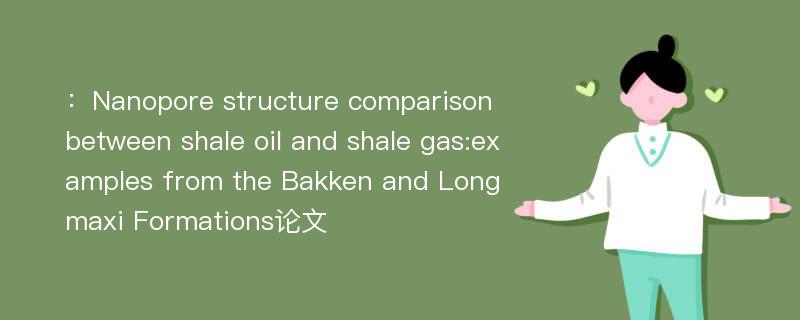
本文主要研究内容
作者(2019)在《Nanopore structure comparison between shale oil and shale gas:examples from the Bakken and Longmaxi Formations》一文中研究指出:In order to analyze and compare the differences in pore structures between shale gas and shale oil formations, a few samples from the Longmaxi and Bakken Formations were collected and studied using X-ray diffraction, LECO TOC measurement, gas adsorption and field-emission scanning electron microscope. The results show that samples from the Bakken Formation have a higher TOC than those from the Longmaxi Formation. The Longmaxi Formation has higher micropore volume and larger micropore surface area and exhibited a smaller average distribution of microsize pores compared to the Bakken Formation. Both formations have similar meso-macropore volume. The Longmaxi Formation has a much larger meso-macropore surface area, which is corresponding to a smaller average meso-macropore size. CO2 adsorption data processing shows that the pore size of the majority of the micropores in the samples from the Longmaxi Formation is less than 1 nm, while the pore size of the most of the micropores in the samples from the Bakken Formation is larger than 1 nm. Both formations have the same number of pore clusters in the 2–20 nm range, but the Bakken Formation has two additional pore size groups with mean pore size diameters larger than 20 nm. Multifractal analysis of pore size distribution curves that was derived from gas adsorption indicates that the samples from the Longmaxi Formation have more significant micropore heterogeneity and less meso-macropore heterogeneity. Abundant micropores as well as mesomacropores exist in the organic matter in the Longmaxi Formation, while the organic matter of the Bakken Formation hosts mainly micropores.
Abstract
In order to analyze and compare the differences in pore structures between shale gas and shale oil formations, a few samples from the Longmaxi and Bakken Formations were collected and studied using X-ray diffraction, LECO TOC measurement, gas adsorption and field-emission scanning electron microscope. The results show that samples from the Bakken Formation have a higher TOC than those from the Longmaxi Formation. The Longmaxi Formation has higher micropore volume and larger micropore surface area and exhibited a smaller average distribution of microsize pores compared to the Bakken Formation. Both formations have similar meso-macropore volume. The Longmaxi Formation has a much larger meso-macropore surface area, which is corresponding to a smaller average meso-macropore size. CO2 adsorption data processing shows that the pore size of the majority of the micropores in the samples from the Longmaxi Formation is less than 1 nm, while the pore size of the most of the micropores in the samples from the Bakken Formation is larger than 1 nm. Both formations have the same number of pore clusters in the 2–20 nm range, but the Bakken Formation has two additional pore size groups with mean pore size diameters larger than 20 nm. Multifractal analysis of pore size distribution curves that was derived from gas adsorption indicates that the samples from the Longmaxi Formation have more significant micropore heterogeneity and less meso-macropore heterogeneity. Abundant micropores as well as mesomacropores exist in the organic matter in the Longmaxi Formation, while the organic matter of the Bakken Formation hosts mainly micropores.
论文参考文献
论文详细介绍
论文作者分别是来自Petroleum Science的,发表于刊物Petroleum Science2019年01期论文,是一篇关于,Petroleum Science2019年01期论文的文章。本文可供学术参考使用,各位学者可以免费参考阅读下载,文章观点不代表本站观点,资料来自Petroleum Science2019年01期论文网站,若本站收录的文献无意侵犯了您的著作版权,请联系我们删除。
